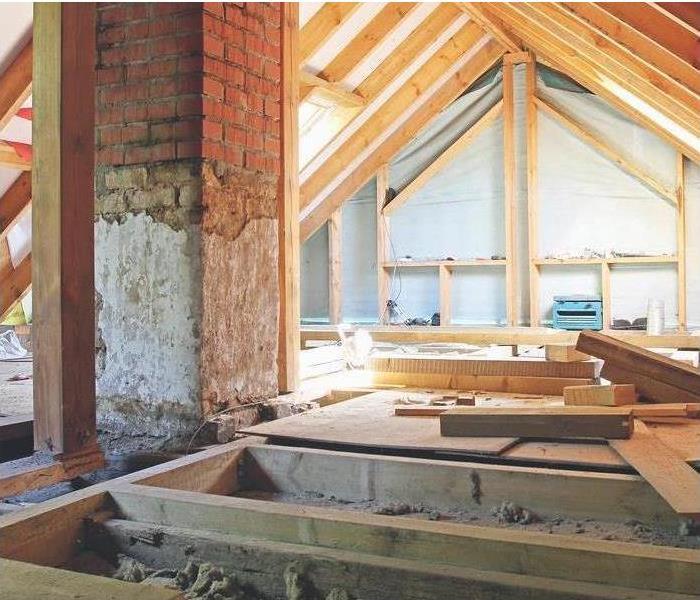Your attic and water damage-It is preventable
4/17/2019 (Permalink)
Water and moisture in an attic can cause major headaches and costly repairs. Also, mold can grow and contaminate your home's air quality, and water can even weaken its structure. Homeowners need to know what causes the moisture in their attic in order to stop water damage. The damage could come from a leaking roof, faulty insulation and/or ventilation or appliance failures. SERVPRO of Lenoir, Duplin & Jones Counties offer these helpful tips at how to reduce attic water damage:
Look for Leaks in Your Attic-Check the insulation and wood for signs of water damage like mold or discoloration of the wood. Also, check around where the light fixtures are paced from above.
Ventilate Your Attic-Moisture in your attic space increases without the proper ventilation. Good attic ventilation is especially important in winter, because in winter, warm air rises, enters the attic, and then condenses on any cold surfaces of the attic. Condensation can’t be released unless your attic has the proper ventilation. Also, make sure any attic vents are open and not blocked by insulation or clutter.
Insulate Your Attic-The temperature levels in your attic are controlled by the insulation you use. In the winter months, the attic temperature should be five to ten degrees warmer than the outside temperature. The attic floor needs to be properly insulated so warm air from inside your house doesn’t enter the attic.
Vent Appliances to the Outside-A common mistake a lot of homeowners experience is improper ventilation of appliances. The clothes dryer, kitchen vents, and bathroom vents should always blow the air outside of the house and not in the attic.
Maintain Attic Appliances-One other thing to note is that appliances in your attic such as air conditioners, hot water heaters, and HVAC systems may fail and cause water damage. Remember to periodically check these appliances for wear and tear and loose connections.



 24/7 Emergency Service
24/7 Emergency Service
